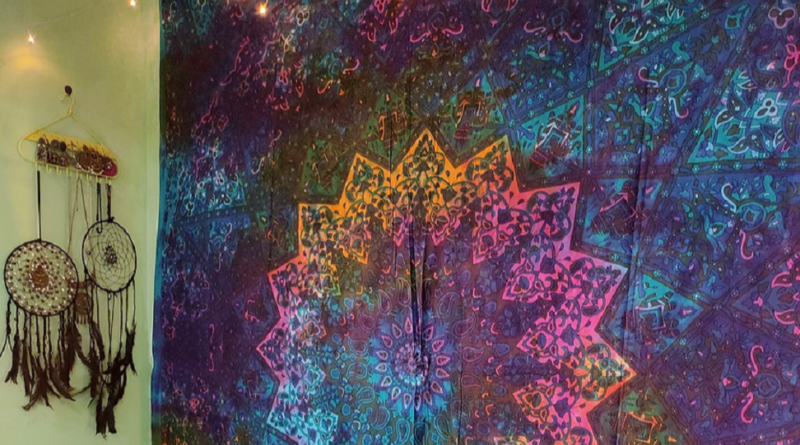5 Things You Must Know About Spiritual Tapestries
Nothing in the universe is devoid of reason. Spiritual tapestries can be one of many tools for understanding the deeper meanings of life and existence. The greatest lessons can be learned from Buddha who taught that everything can be boiled down to awareness and mindfulness. Tapestries are way more than art pieces. For ages, spiritual tapestries are used for meditation and healing.
Famously, mandala tapestries are based on the Buddhist principles of focussing on a single point to attain complete stillness of thoughts. You may have noticed increasing trends of Buddha tapestry wall hangings in décors as a replacement to idols and paintings.
Reviving ancient beliefs through textile art, spiritual tapestries are a melting pot of creativity and mental peace. Every print on spiritual tapestry carries credence from philosophers, yogis, and modern psychologists. If used in the right way, they are associated with noticeable changes in the everyday lifestyle.
Everything that surrounds us has a strong impact on our inner well-being. By gathering elements that radiate positive vibrations around you, you can kick start your divine journey. These spiritual tapestries also known as the elephant and the tree of life tapestries come in different categories. Let’s quickly brief you about 5 things you must know before getting your own spiritual tapestry!
1. SPIRITUAL TAPESTRIES AND BUDDHA
Buddha relentlessly preached mindfulness for a constructive living. A large variety of spiritual tapestry is made with of Buddhist art involving Bodhi tree, elephants, lotus, meditating Buddha, mandalas, enlightened Buddha. Having prints of such auspicious elements around your space is believed to reinforce positivity and divine connectivity.
Spiritual wall tapestries having Elephants in different positions are considered sacred in many cultures. There is often a parallel drawn between elephants and Buddha based on the story that Buddha’s mother saw a white elephant with lotus flowers in her dream prior to conceiving him. Buddha-inspired wall tapestries mainly aim to create a spiral of peaceful energies and motivation for awareness.
2. MANDALA TAPESTRIES
CARL JUNG’s APPROACH ON SPIRITUAL TAPESTRIES.
MANDALA is a pattern made with a singular focal point as the center. The making of mandalas differs according to different cultures and beliefs. But every system of belief summarises the mandala as a symbol of a continuous flow of energy and building concentration.
Spiritual mandala tapestries are extensively used for their hypnotic beauty and holy interpretations. They are made with the use of traditional motif or paisley designs or include elephants, flowers, or rustic prints arranged in a repeating circular pattern Bohemian décor uses spiritual mandala tapestries or wall hangings as an expression of completeness.
Carl Jung, the founder of analytical psychology, through his study and experimentation, concluded that MANDALA designs helped his subjects to improve focus, release negativity, and meditate better. Jung described the mandala as an archetypal image that represents the connection of every soul to its inner core. The central point of the mandala is compared to the center point of the psyche, to which everything is related, by which everything is arranged and which itself is a source of energy.
“I knew that in finding the mandala as an expression of the self, I had attained what was for me the ultimate”
¬– C.G. JUNG
3. PSYCHEDELIC MEANINGS OF TAPESTRIES
The evolving human civilization has gathered centuries of humongous knowledge to explain and understand the omnipresent energies. We now relate everything with the universe and nothing better than art has satisfied the human pursuit of spirituality. Spiritual tapestries are made with an attempt to include prints belonging from different walks of cultures that explain universal powers, psyche, and beliefs.
One such design is the print of “Tree of life” on tapestries that depicts different meanings for different people. For some, it stands for the tree in the Garden of Eden which gave eternal life, for others it may be a diagrammatic representation of the cycle of life and its connection to nature. Other types of prints like the sun and moon tapestries, bohemian tapestries or the moon tapestries, dream catcher tapestries, etc. are appreciated for the psychedelic aura they create in the environment.
4. TRADITIONAL YOGIC ROOTS OF SPIRITUAL TAPESTRIES
The arty and holy introduction to spiritual tapestries shall remain incomplete without the mention of YOGIC prints and their importance when used on tapestries. Ancient Indian roots link yogic culture with a life of liberation. And in the present time when the yogic lifestyle is a popular wave around the globe, its influence can be seen in textile art and décor ideas. Spiritual tapestries with yogic prints involve designs that display a meditating figure of a yogi, the seven chakras, the sacred symbol of Om, or different postures of yoga.
In the most creative way, the power of medieval yogic methodologies and teachings are packaged in these beautiful spiritual tapestries. When used as wall hangings, mats, rugs, or bedspreads they instigate mental and physical discipline. Apart from awe-inspiring designs and colours, yogic tapestries motivate for a union of the self with the divine.
5. BEST WAYS TO USE SPIRITUAL TAPESTRIES
The millennial generation is eager about exploring this mystic, wonderful, incredible human existence. This unconventional attitude opens up to a world full of choices. While using spiritual tapestries it is good to be aware of your intention. Are you solely into tapestries for mere decor? Or your desire is to reap the benefits to which they are linked.
It is advised to study the meaning of spiritual tapestry. The science of feng shui discusses in depth the placement, purpose, and effects of using Buddha wall hangings or elephant tapestries. In a room where you meditate or pray you can use spiritual wall art like yogic or divine art tapestries.
In living spaces or offices, it can be used as a theme-based décor too. Try using them with plants, charms, crystals or any other calming element to set the mood. Select colors and prints that sync with your spiritual and aesthetic goals. When you pursue spirituality by the path of art, it makes the journey amusing.
About The Author
Raajsi Boho offers a wide and distinctive range of high-quality screen printed bohemian wall tapestries, mandala wall tapestries, psychedelic tapestries, trippy tapestries, and many more of the trending tapestries across the world. Through Raajsi Boho, we aim to directly empower the families of our artisans and their workmanship. We are a platform for not only eclectic and bohemian interior decor products but also a platform for our skilled artisans to be empowered to earn a stable and healthy income through their unremarkable skills and art.




